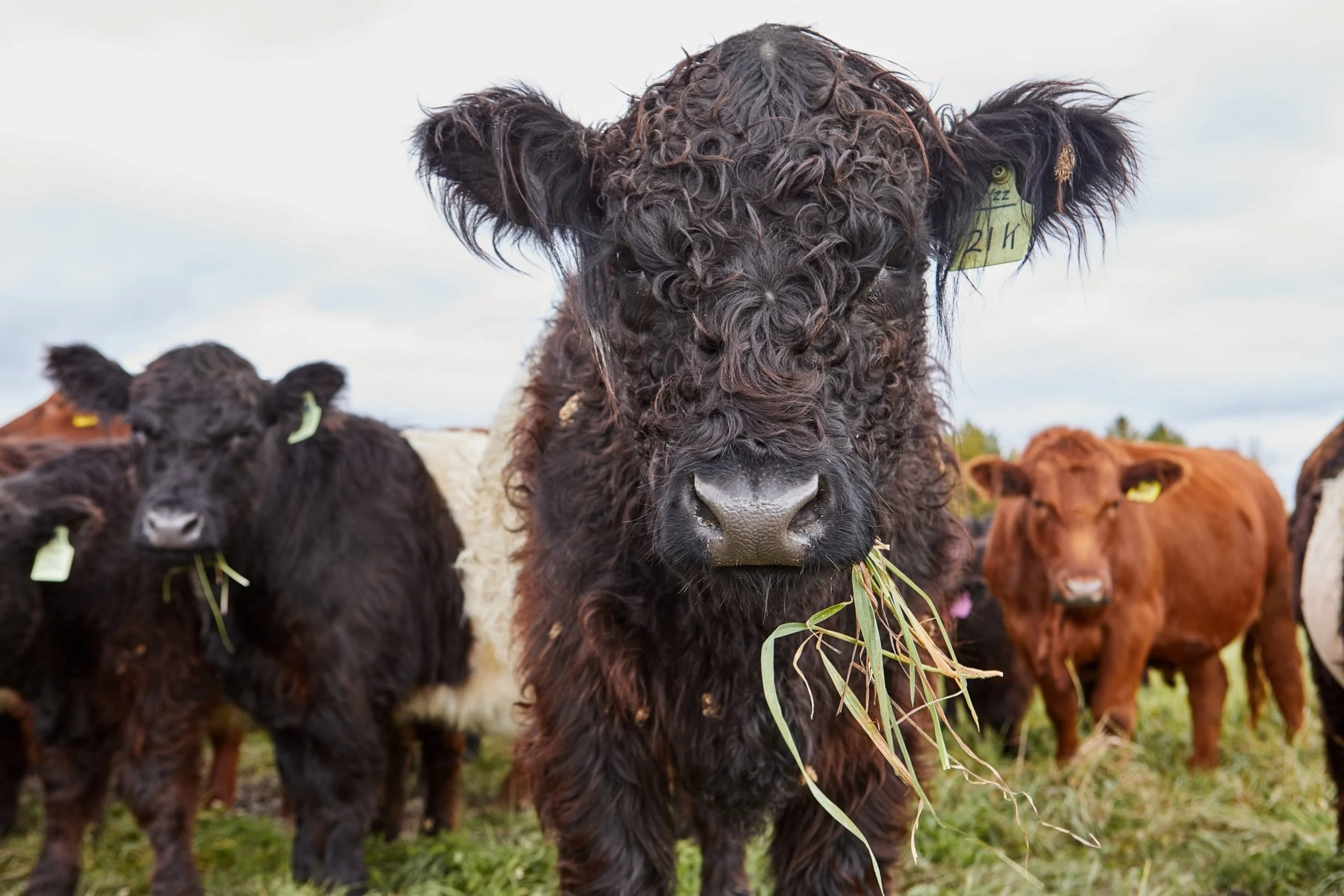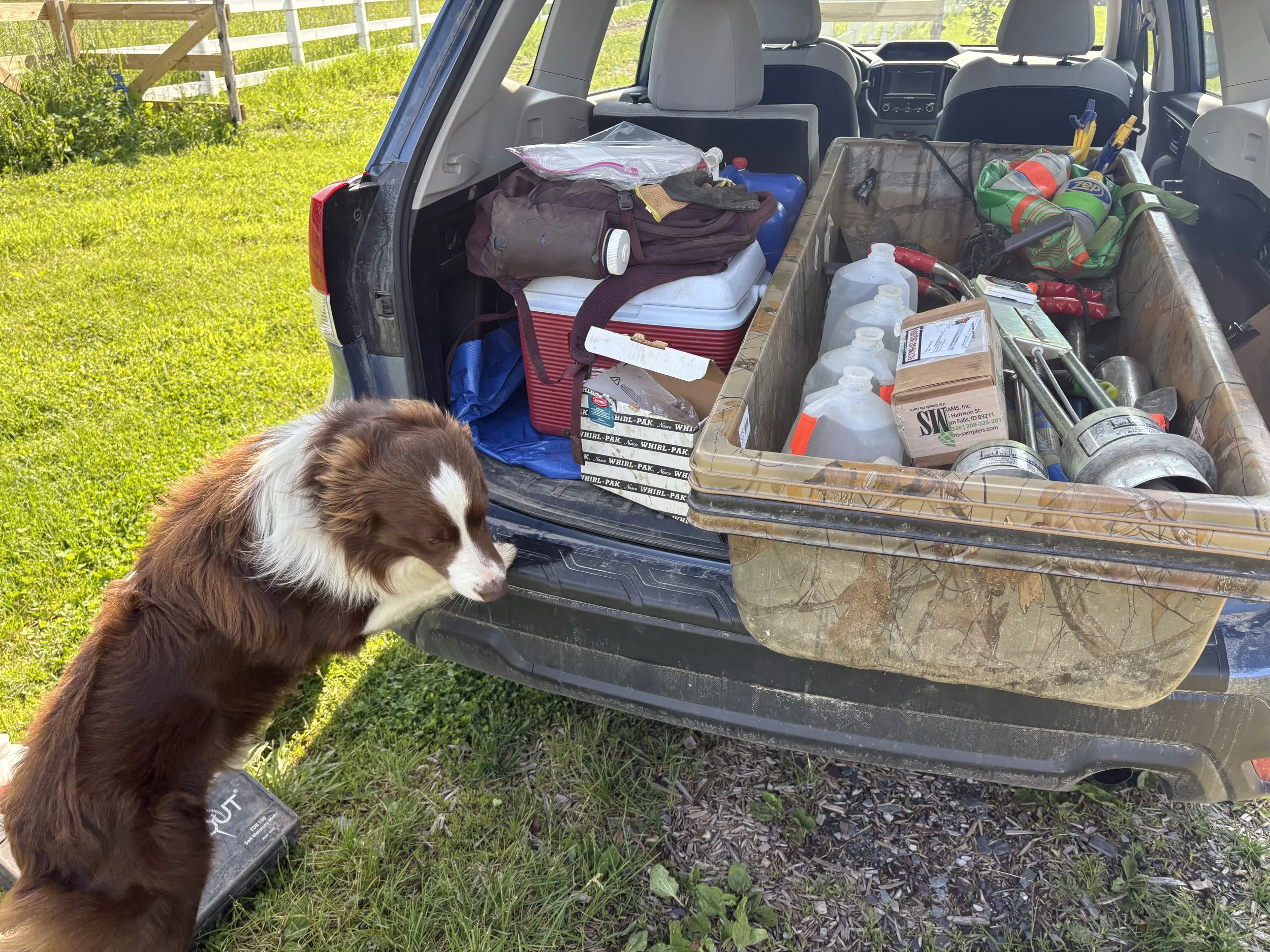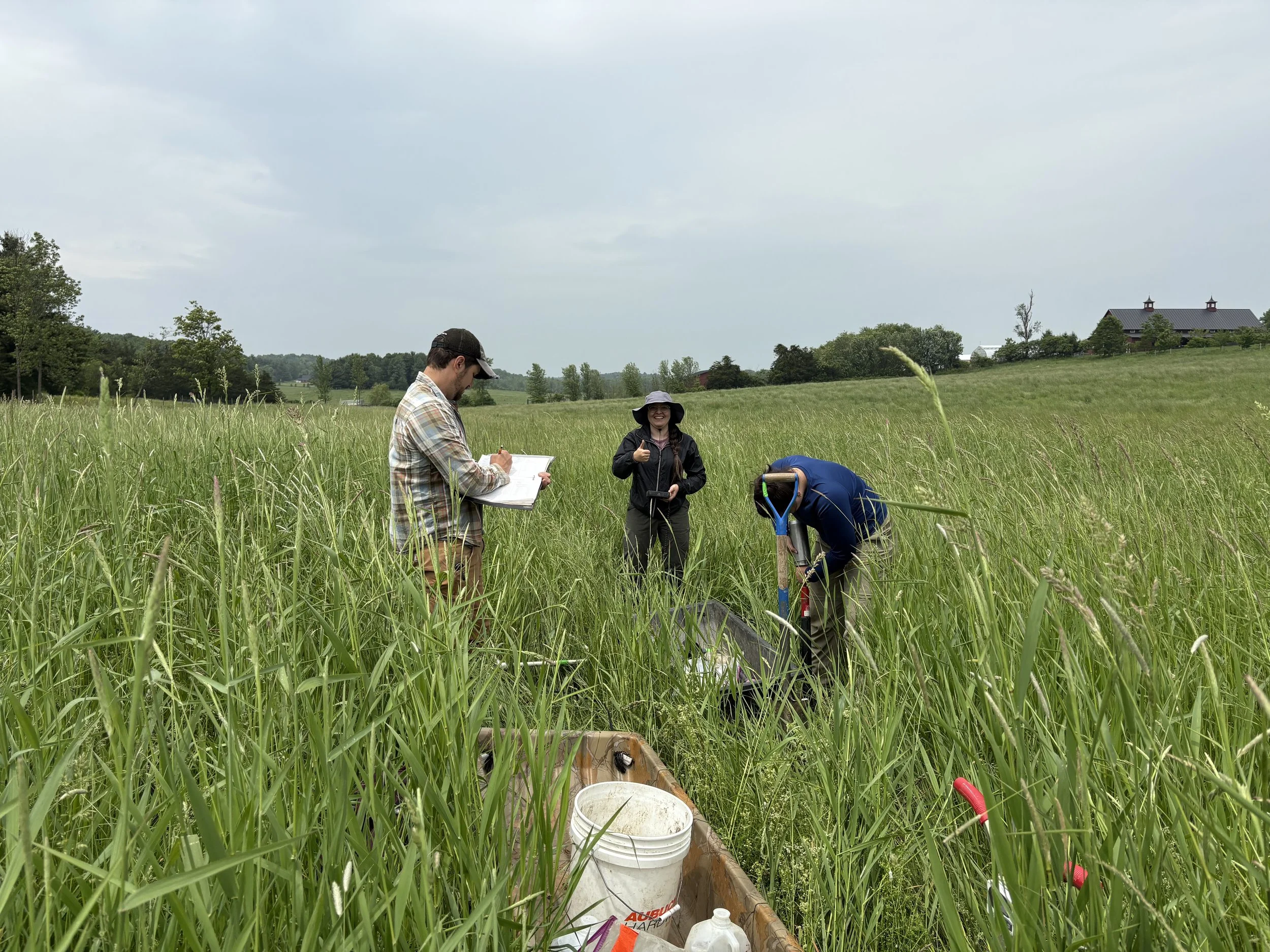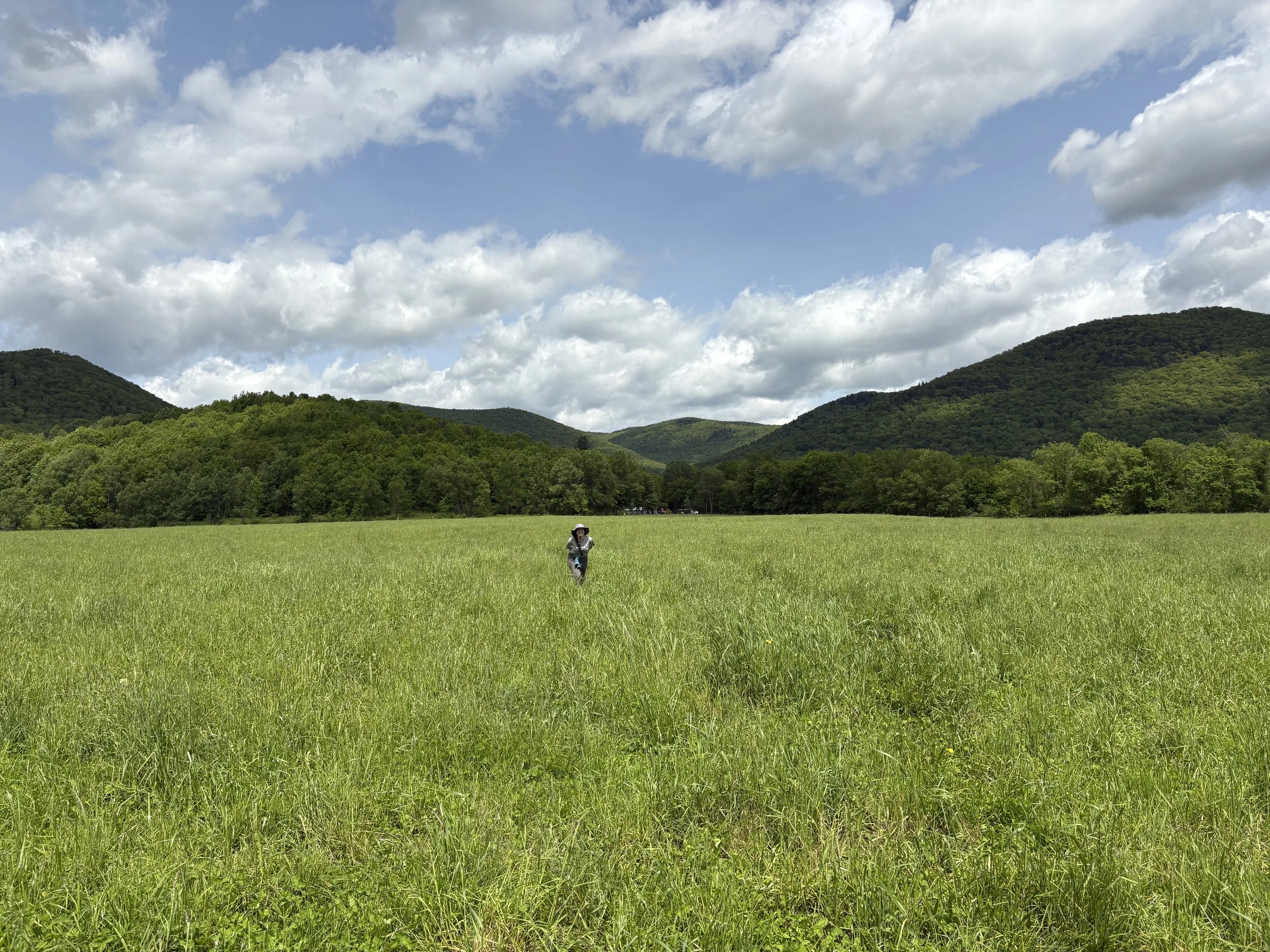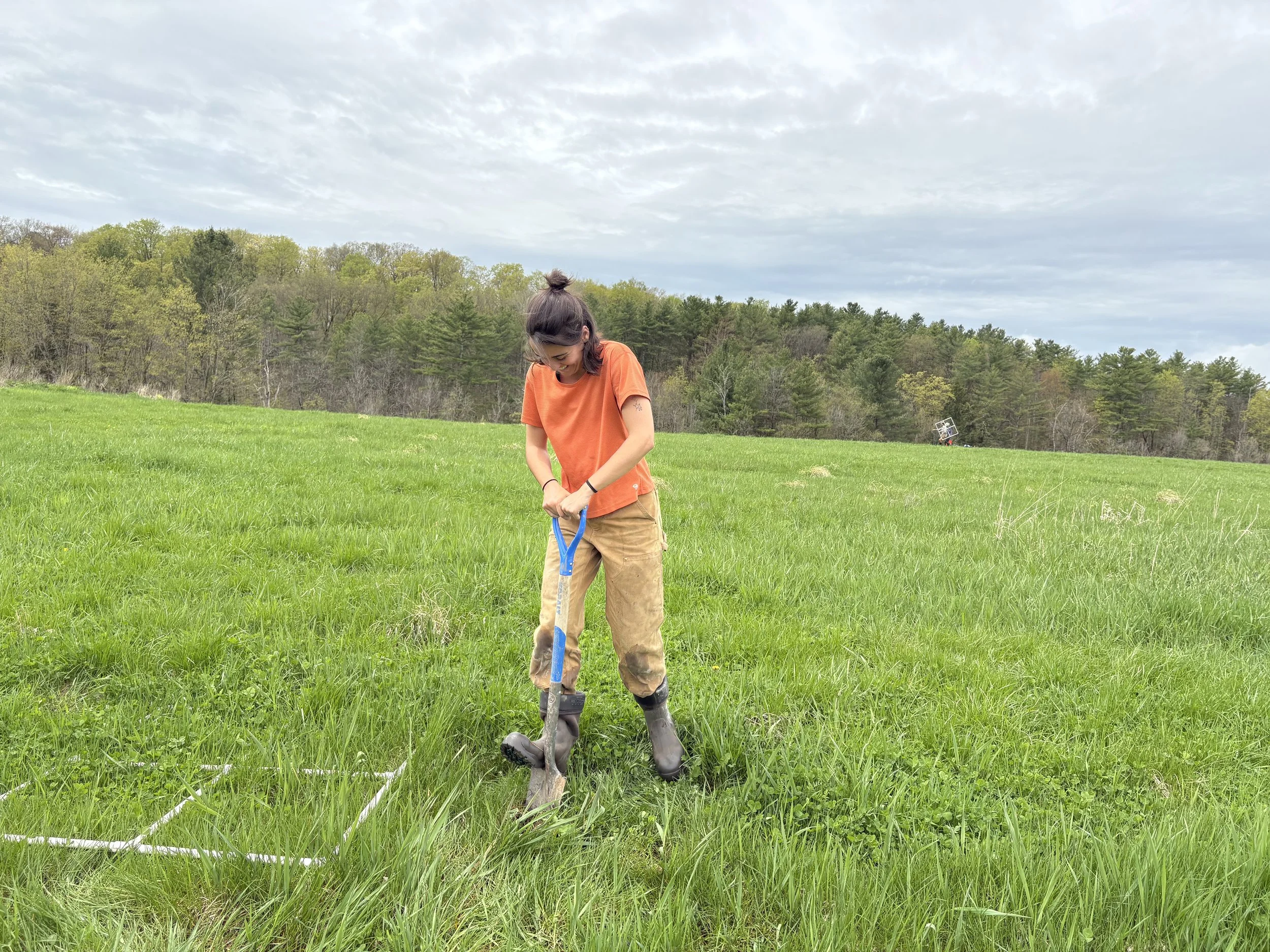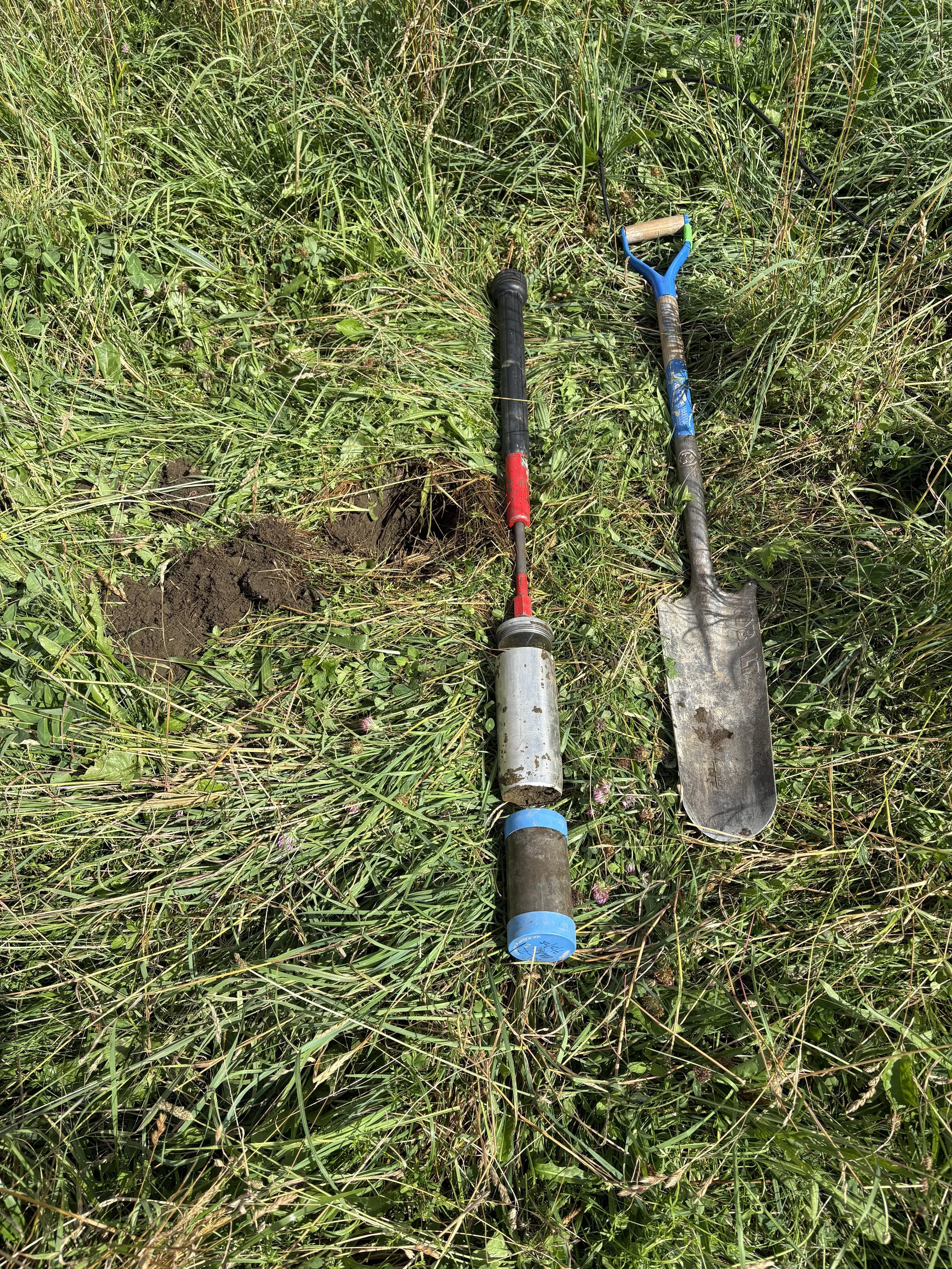Ecological Monitoring in Action: A CIG Field Update
By Madie Hassett
Photo Credits to Nour El-Naboulsi, Madie Hassett, and Grace Kaufman.
Madie out sampling in the field.
Philo Ridge Farm was established just over a decade ago with a vision to contribute meaningfully to the future of agriculture in Vermont. From the beginning, one of our core objectives was to demonstrate how farmland can serve as an ecologically positive landscape through the use of thoughtful, integrated farming practices.
Since the outset, evaluating the transition of Philo Ridge Farm’s land from conventional to organic regenerative methods has been a key focus. While the benefits of our practices may be apparent on the farm itself, we believe their true impact lies in being measurable, documented, and shared so that other farms can learn from and build upon our efforts. Our research programs and data collection processes support ongoing learning, help refine our approach, and enable us to communicate the value of our work with clarity and credibility.
In 2020, preliminary data collected through Philo Ridge Farm’s research initiatives enabled our research partners, the University of Vermont (UVM) and the Vermont Land Trust, to apply for and receive a $2 million Conservation Innovation Grant (CIG) from the USDA Natural Resources Conservation Service to study the outcomes of transitioning Vermont farms from conventional farming practices to regenerative systems for grass-fed livestock.
As the Research Coordinator, I support the work we do on CIG by focusing on evaluating the transition of Vermont farms from conventional methods to regenerative systems for grass-fed livestock. Partnering with a diverse group of 15 experimental and 5 control farms across the state, this project aims to deliver Vermont’s first comprehensive, state-wide analysis of the environmental, economic, and social impacts of regenerative agriculture. The participating farms are implementing soil health strategies such as management-intensive rotational grazing (MIRG), supplemental seeding, and targeted pasture nutrient amendments.
Grace, Helen, Jen, Abbey, and Nour sampling in the Northeast Kingdom …. a cool 44 degrees with rain. At least there are no bugs!?
Vehicle inspection before the team heads out into the field. The sleds are used to carry all of the equipment out there, and have been a real game changer for fieldwork.
Mario, Abbey, and Sarah sampling at one of the control farms - anyone recognize our barn in the background?
In our previous blog posts, Healthy Farms, Healthy Soils and Photo Essay: A Day In The Life Of An Ecological Researcher we unpack the research programs at Philo Ridge Farm and share more information about our work on a statewide level with CIG.
This spring and summer has been busy with field sampling and I find myself outside on farms and driving around the state more than sitting in the office behind my desk. The CIG team undertook the gargantuan task of May field sampling this year - it was a long month, but a fun one!
Abbey making her way through one of the last experimental fields of May sampling in Southern Vermont.
As this is the final year of the CIG project, we had many more soil samples to collect in addition to the usual botanical samples. Significant changes in the chemical, physical, and biological characteristics of the soil we are studying typically take more than a year or two to occur. To use our time and resources most efficiently, the team decided to take these samples only in Year 1 (2022) and Year 4 of sampling. Thankfully, the CIG team had a wonderful group of graduate and undergraduate students from UVM to help with sampling this year. We could not have done it without them!
Below, you will find some more information about a selection of the soil data we collected and some pictures of the team fieldwork being conducted.
Soil Sampling: CASH tests
A CASH test, or “Comprehensive Assessment of Soil Health,” is a service provided by the Cornell Soil Health Laboratory in Ithaca, NY. Unlike a typical nutrient-based soil test, a CASH test offers information about soil biological and physical properties in addition to the standard nutrient analysis. It also includes management recommendations based on the results. The NRCS requires projects like ours to conduct CASH tests at the beginning and end of long-term studies like this one, as they provide a comprehensive and standardized set of data for each field enrolled in the study.
Sadie collecting soil for CASH testing. The team dug approximately 2,067 holes for soil sampling over the course of the season. We collect soil samples from multiple points within each field, then combine them into a single composite sample for each field.
Soil Sampling: Infiltration
The CIG team used infiltrometers to measure how quickly water enters the soil– this is usually expressed as inches of water per hour or half hour. Soil infiltration is an important characteristic to measure, as poor infiltration can contribute to unproductive fields, soil compaction, and issues with runoff. The ability of water to get into the soil and reach plant roots and other soil biota is crucial to having productive and resilient pastures.
An infiltrometer used to measure soil infiltration in study fields. Water is poured into two rings driven into the ground at the base of the device, and a team member records how much water infiltrates the soil over a set amount of time.
Soil Sampling: Bulk Density
The CIG team collected bulk density cores to measure soil compaction in each of our study fields. Bulk density is influenced by a wide range of factors, including management practices, soil type, structure, and porosity. We drove 2x6” cores (see photos below) into the soil at three different locations within each enrolled field. Bulk density is reported as the weight of dry soil per unit of volume, which is why it's important to use these cores to collect the same volume of soil from each field. The students have been hard at work back in the lab, processing the samples for further analysis.
We use a slide hammer (red and black tool) or mallet to pound the metal core into the ground until the top is flush with the soil surface. Within that metal core is a removable plastic sleeve (clear with blue caps) that collects a standard amount of soil each time. We collected 225 cores over the course of spring sampling.
The slide hammer and core inserted into the soil and ready for sampling.
Stay tuned for more research updates from the field as we continue to learn, adapt, and share what we're discovering along the way. There's so much more to explore, and we’re excited to bring you along with us.

